
How to Use IPS 1.14" 135x240 ST7789 SPI: Examples, Pinouts, and Specs
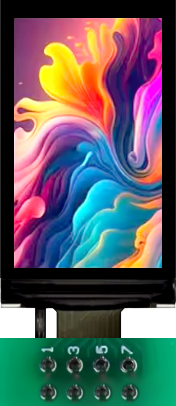
 Design with IPS 1.14" 135x240 ST7789 SPI in Cirkit Designer
Design with IPS 1.14" 135x240 ST7789 SPI in Cirkit DesignerIntroduction
The IPS 1.14" 135x240 ST7789 SPI is a compact, high-quality display module designed for use in a variety of electronic projects. Featuring a 1.14-inch In-Plane Switching (IPS) screen, it offers a resolution of 135x240 pixels, delivering sharp visuals, vibrant colors, and wide viewing angles. The module is powered by the ST7789 driver and communicates via the Serial Peripheral Interface (SPI), making it suitable for microcontroller-based applications.
Explore Projects Built with IPS 1.14" 135x240 ST7789 SPI
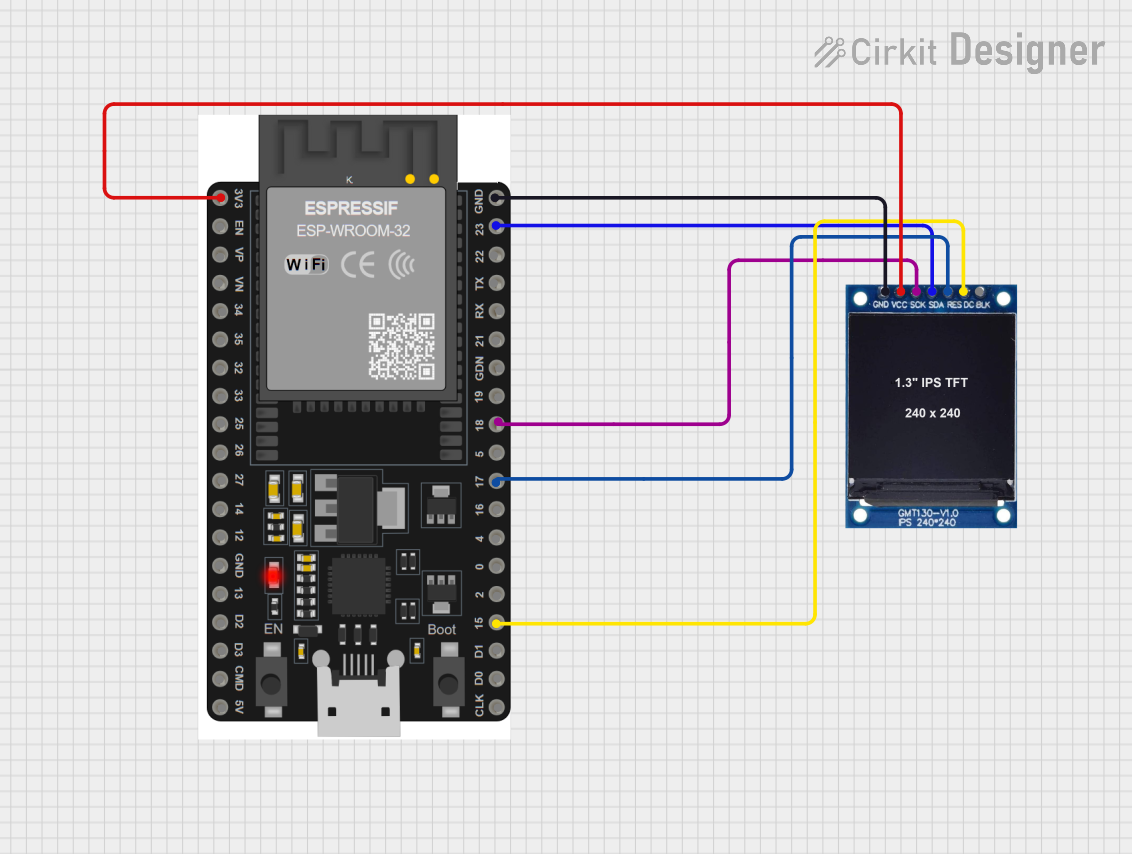
 Open Project in Cirkit Designer
Open Project in Cirkit Designer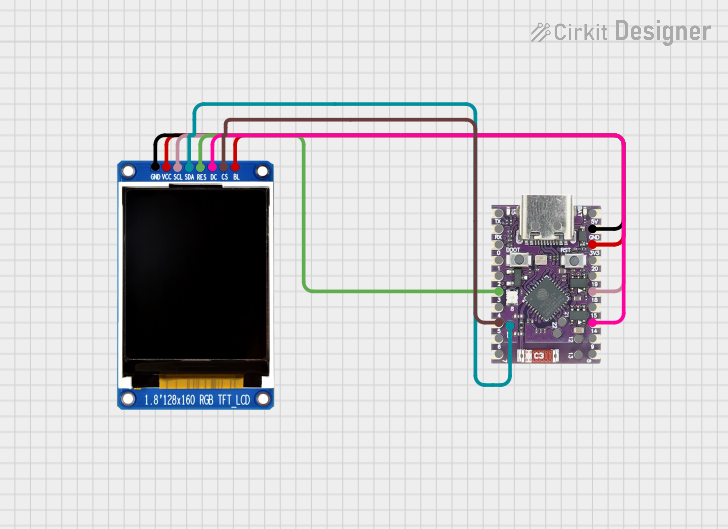
 Open Project in Cirkit Designer
Open Project in Cirkit Designer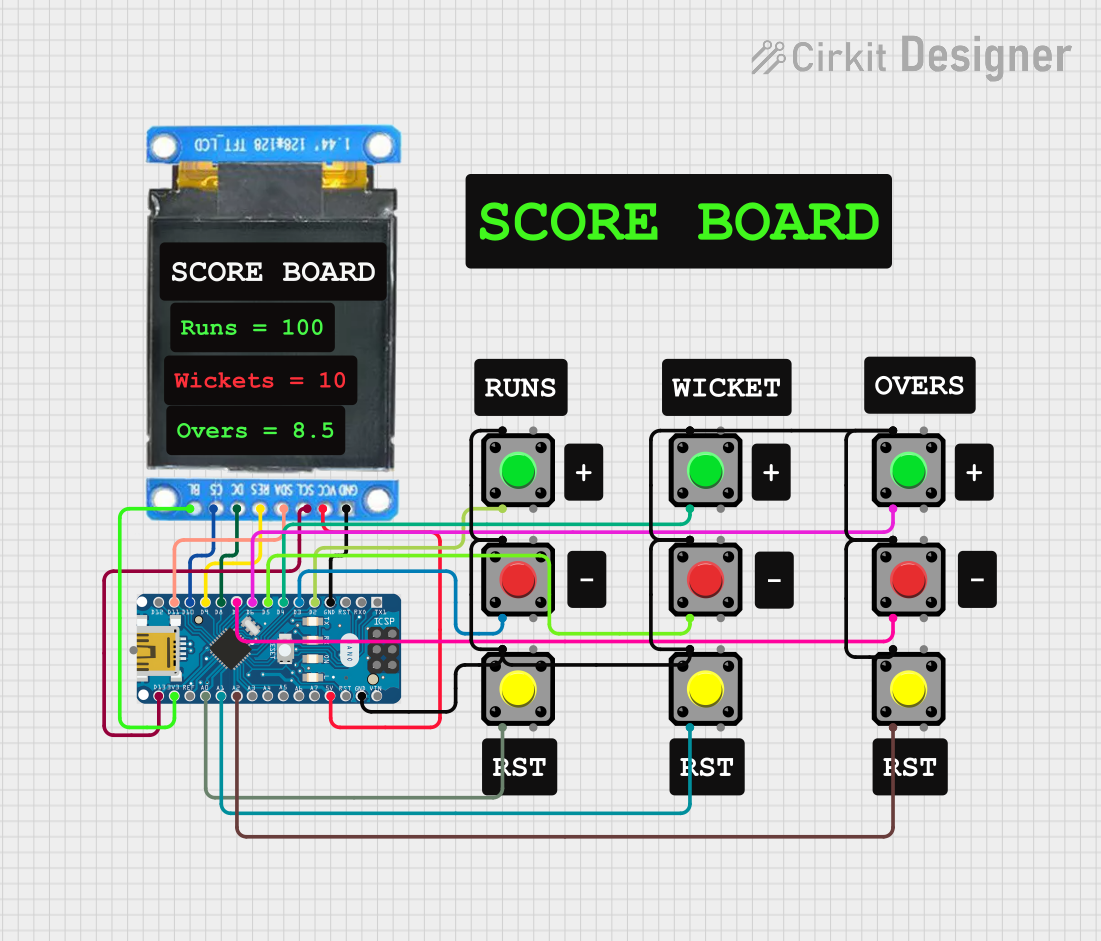
 Open Project in Cirkit Designer
Open Project in Cirkit Designer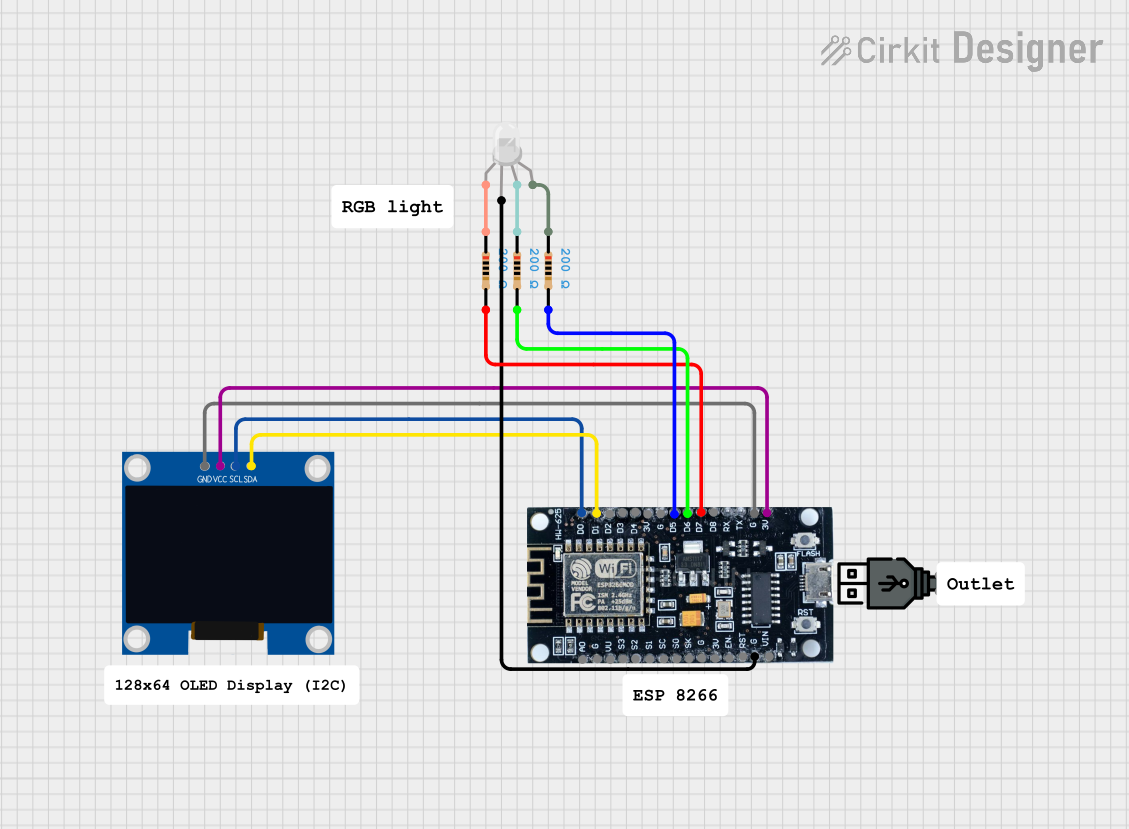
 Open Project in Cirkit Designer
Open Project in Cirkit DesignerExplore Projects Built with IPS 1.14" 135x240 ST7789 SPI

 Open Project in Cirkit Designer
Open Project in Cirkit Designer
 Open Project in Cirkit Designer
Open Project in Cirkit Designer
 Open Project in Cirkit Designer
Open Project in Cirkit Designer
 Open Project in Cirkit Designer
Open Project in Cirkit DesignerCommon Applications and Use Cases
- Wearable devices and smartwatches
- Portable gaming consoles
- IoT dashboards and status displays
- Embedded systems requiring graphical interfaces
- Educational and hobbyist projects
Technical Specifications
Below are the key technical details of the IPS 1.14" 135x240 ST7789 SPI display module:
| Parameter | Value |
|---|---|
| Display Type | IPS (In-Plane Switching) |
| Resolution | 135x240 pixels |
| Driver IC | ST7789 |
| Interface | SPI (4-wire) |
| Operating Voltage | 3.3V |
| Logic Level Voltage | 3.3V (5V-tolerant with level shifter) |
| Backlight Voltage | 3.0V to 3.3V |
| Backlight Current | ~20mA |
| Viewing Angle | Wide (up to 178°) |
| Dimensions | 1.14 inches (diagonal) |
| Operating Temperature | -20°C to 70°C |
Pin Configuration and Descriptions
The module typically has 7 pins for interfacing. Below is the pinout:
| Pin | Name | Description |
|---|---|---|
| 1 | GND | Ground connection |
| 2 | VCC | Power supply (3.3V) |
| 3 | SCL | SPI Clock (SCK) |
| 4 | SDA | SPI Data (MOSI) |
| 5 | RES | Reset pin (active low) |
| 6 | DC | Data/Command control pin (High = Data, Low = Command) |
| 7 | CS | Chip Select (active low) |
Usage Instructions
How to Use the Component in a Circuit
- Power Supply: Connect the
VCCpin to a 3.3V power source and theGNDpin to ground. - SPI Communication: Connect the
SCL(SPI Clock) andSDA(SPI Data) pins to the corresponding SPI pins on your microcontroller. - Control Pins:
- Connect the
RESpin to a GPIO pin for resetting the display. - Use the
DCpin to toggle between data and command modes. - Connect the
CSpin to a GPIO pin to enable or disable the display module.
- Connect the
- Backlight: The backlight is powered through the
VCCpin. Ensure the power supply can handle the additional current (~20mA).
Important Considerations and Best Practices
- Voltage Levels: Ensure the logic level of your microcontroller matches the display's 3.3V logic. If using a 5V microcontroller, use a level shifter.
- SPI Speed: The ST7789 driver supports high SPI clock speeds, but start with a moderate speed (e.g., 4 MHz) to ensure stable communication.
- Initialization: Proper initialization of the ST7789 driver is crucial. Use a library or reference code to simplify this process.
- Mounting: Handle the display carefully to avoid damaging the screen or flex cable.
Example Code for Arduino UNO
Below is an example of how to use the IPS 1.14" 135x240 ST7789 SPI display with an Arduino UNO. This example uses the popular Adafruit_GFX and Adafruit_ST7789 libraries.
#include <Adafruit_GFX.h> // Core graphics library
#include <Adafruit_ST7789.h> // ST7789 driver library
#include <SPI.h> // SPI library
// Define pins for the display
#define TFT_CS 10 // Chip Select pin
#define TFT_RST 9 // Reset pin
#define TFT_DC 8 // Data/Command pin
// Create an instance of the display
Adafruit_ST7789 tft = Adafruit_ST7789(TFT_CS, TFT_DC, TFT_RST);
void setup() {
// Initialize serial communication for debugging
Serial.begin(9600);
Serial.println("ST7789 Display Test");
// Initialize the display
tft.init(135, 240); // Initialize with width=135 and height=240
tft.setRotation(1); // Set display rotation (0-3)
// Fill the screen with a color
tft.fillScreen(ST77XX_BLACK);
tft.setTextColor(ST77XX_WHITE);
tft.setTextSize(2);
tft.setCursor(10, 10);
tft.println("Hello, ST7789!");
}
void loop() {
// Add your code here to update the display
}
Notes:
- Install the
Adafruit_GFXandAdafruit_ST7789libraries via the Arduino Library Manager before running the code. - Adjust the pin definitions (
TFT_CS,TFT_RST,TFT_DC) to match your wiring.
Troubleshooting and FAQs
Common Issues and Solutions
Display Not Turning On:
- Verify the power supply connections (
VCCandGND). - Ensure the backlight is powered (check current draw).
- Verify the power supply connections (
No Output or Garbled Display:
- Check SPI connections (
SCL,SDA,CS,DC,RES). - Ensure the SPI clock speed is not too high for your setup.
- Verify the initialization code matches the display's resolution and driver.
- Check SPI connections (
Flickering or Unstable Display:
- Use shorter wires for SPI connections to reduce noise.
- Add decoupling capacitors near the power pins.
Display Stays Blank After Reset:
- Ensure the
RESpin is properly toggled during initialization. - Check the logic level of the
DCandCSpins.
- Ensure the
FAQs
Q: Can I use this display with a 5V microcontroller?
A: Yes, but you must use a level shifter to convert the 5V logic signals to 3.3V.
Q: What is the maximum SPI clock speed supported?
A: The ST7789 driver supports SPI clock speeds up to 15 MHz, but start with lower speeds for stability.
Q: Can I use this display in outdoor applications?
A: While the IPS screen offers good visibility, it is not sunlight-readable. Consider using a reflective display for outdoor use.
Q: How do I rotate the display?
A: Use the setRotation() function in your code. Valid values are 0, 1, 2, and 3.
By following this documentation, you can successfully integrate the IPS 1.14" 135x240 ST7789 SPI display into your projects!